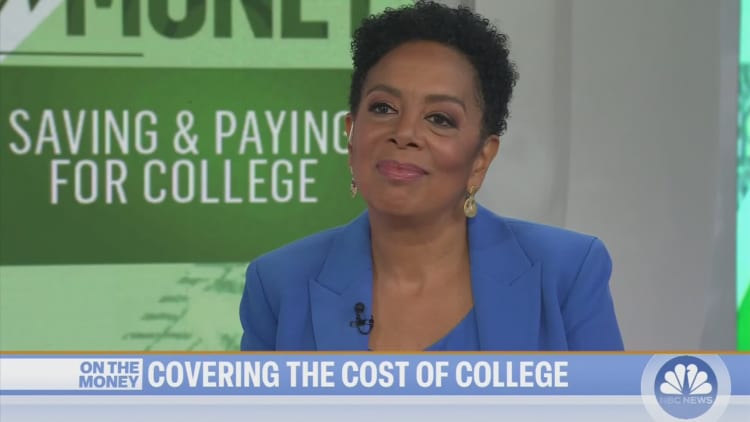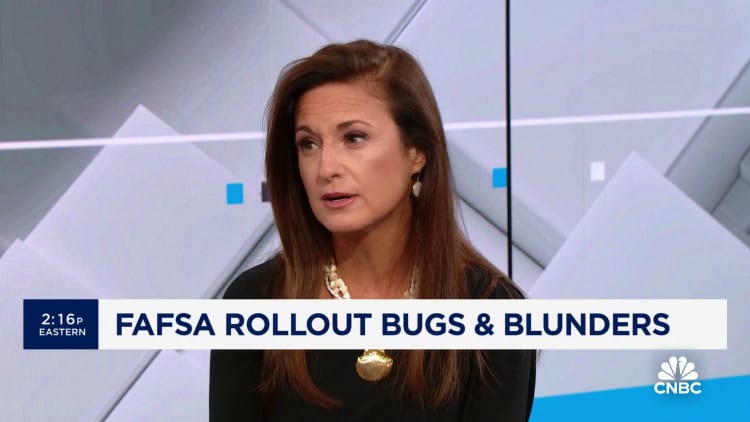
“His portfolio is still down from the April slump when everybody else’s accounts have gone up.”
Source link
year
Apple stock is down 10% this year, but there are 5 reasons for investors to remain bullish, Wedbush says

-
Apple stock is down about 12% this year but could still see stellar gains in 2024, according to Wedbush.
-
The iPhone maker has 48% upside, the firm said, outlining five bullish tailwinds for the stock.
-
Apple stock has had a disappointing year so far, but there are still reasons for investors to stay bullish on the iPhone maker, according to Wedbush.
The firm pointed to a “black cloud” hanging over the company, with Apple shares sliding 10% for a loss of over $200 billion in market value so far in 2024. That loss comes amid demand concerns in China, where Apple is battling a government crackdown on iPhones and fierce competition from China-based rivals, like Huawei.
“It’s clear that Apple is navigating one of the more difficult China demand environments we have seen the last 5 years as a combination of factors has created a perfect storm for Cupertino in this key market,” analysts said in a note on Tuesday, estimating that iPhone sales in China would likely fall “moderately” below estimates in March.
But Apple stock still has the potential to deliver big gains this year, analysts said, maintaining their “outperform” rating and $250 price target on the stock, the highest estimate on Wall Street.
A rise to that level implies 48% upside for Apple, which Wedbush said could stem from five bullish factors:
-
iPhone sales could be strong overall this year. 2024 estimates are “hittable” despite some conservative 2025 estimates for iPhone sales, analysts noted.
-
There could be pent-up demand for iPhones, given how many users are due for an upgrade. Wedbush estimated there were around 270 million iPhones that could be swapped for a newer version, especially as Apple is set to roll out its iPhone 16 this year.
-
Services revenue for the company remains “rock solid,” Wedbush analysts said. Apple pulled record-high revenue from the services side of its business over the first quarter, according to its latest earnings report.
-
The company is integrating AI into its devices. Apple is set to make an announcement on its progress with generative artificial intelligence at its Worldwide Developers Conference in June, Wedbush predicted.
-
Apple still dominates the smartphone market, with 2.2 billion of its devices being used around the world. That’s the “strongest installed base of any company,” analysts noted.
Over the medium term, investors are eyeing Apple’s next quarterly earnings report, which is set to roll out on May 2.
“The Street is bracing for a brutal March quarter and soft June guidance which we believe could be the last few quarters of this growth storm as Apple starts to see a renaissance of growth heading into the September quarter and FY25,” Wedbush said. “While some patience is required to navigate this China weakness, we believe the seeds for an Apple growth turnaround are being planted in the field.”
Most analysts on Wall Street have maintained a “strong-buy” rating for the stock, according to data from the Nasdaq Exchange. The average price target for Apple stood at $202 a share, implying a 20% upside for the stock.
Read the original article on Business Insider
I’m 60 With $1.2 Million in an IRA. Should I Convert $120,000 Per Year to a Roth to Avoid RMDs?

If you’re 60 years old with $1.2 million saved for retirement in a traditional IRA, you may be starting to think about required minimum distributions (RMDs) and the hefty annual tax bill they can create once you turn 73. Converting a portion of your IRA to a Roth IRA each year can help you reduce or avoid RMDs and take control of your tax bill – but also comes at a cost. Discuss your Roth IRA conversion questions with a financial advisor to determine if this strategy aligns with your broader financial plan.
RMD Rules: The Basics
Once you turn 73, the IRS requires that you start taking annual distributions called required minimum distributions (RMDs) from traditional IRAs, 401(k)s and similar tax-deferred accounts. RMDs are calculated by dividing your account balance by your life expectancy factor, a value that is set by the IRS based on your age.
RMD withdrawals are treated as ordinary income. With a large IRA balance, the size of the mandatory RMDs could easily push someone into a higher tax bracket and result in a higher tax bill. Remember, a financial advisor can be a valuable resource when it comes to planning for RMDs.
Roth Conversions

Roth IRAs, unlike traditional IRAs and 401(k)s, aren’t subject to RMD rules. So by converting your IRA to a Roth, you could avoid having to pay extra income taxes from mandatory IRA withdrawals in retirement. The catch is that you have to pay income taxes on the amount you convert at your ordinary income rate when you convert it. This can lead to a massive tax bill if you were to convert a $1.2 million IRA to a Roth all at once.
Instead, gradually converting your traditional IRA to a Roth IRA allows you to control when you pay taxes. Rather than unspecified mandatory RMD withdrawals, you choose when to take taxable Roth conversions. Roth withdrawals in retirement are then tax-free, provided you wait five years to withdraw those assets.
Keep in mind that the five-year period applies to each conversion. If you were to convert a portion of your IRA in 2024, 2025 and 2026, you’d have to wait until 2029, 2030 and 2031, respectively, to withdraw each group of funds tax-free.
If you need additional help navigating the rules surrounding Roth conversions, use this tool to match with a financial advisor.
A Roth Conversion Example
Assuming your investments grow at 5% each year for 13 years, your $1.2 million IRA could be worth around $2.3 million by the time you reach age 73. By that time, your first RMD would be approximately $87,000 based on the IRS life expectancy factor. Assuming you’re collecting $80,000 annually in taxable income from pensions and Social Security, adding an extra $87,000 would push you from the 22% bracket into the 24% bracket. (This assumes that the current tax brackets remain in place after 2025 when key provisions of the Tax Cut and Jobs Act sunset.)
But with 13 years of $120,000 Roth conversions already completed, the IRA balance requiring RMDs could be reduced to around $42,000 by age 73. Your first RMD would be just under $1,600. This would likely not push you into a higher bracket and save you thousands in annual taxes during retirement compared to taking the full $87,000 distribution without any prior Roth conversions.
The key is to not convert your entire IRA to a Roth immediately, but rather take an incremental approach. By limiting Roth conversions to a certain amount, you can control and potentially reduce your tax liability. Spreading conversions over time allows taxpayers to fill up their current bracket without exceeding it. By staying in lower brackets, more money is shielded from future taxes than paying the IRS immediately at today’s rates.
But you don’t have to do it all alone. A financial advisor can help you plan out your Roth conversion strategy and manage your taxes in retirement.
Roth Conversion Limitations

No matter how you do it, Roth conversions trigger taxes. Without sufficient non-retirement savings or other sources of income, investors may struggle to pay conversion taxes or be forced to sell investments at a loss. Optimal timing and tax planning are also challenging. Tax rates and laws can change frequently, making it hard to predict brackets decades in advance. Income fluctuations from bonuses, dividends or retirement plan withdrawals also complicate projections.
Converting too little defeats the purpose of avoiding higher future RMD taxes. But converting too much could push you into higher brackets now or reduce your flexibility if tax rates decline. Balancing present and future tax minimization is tricky with many uncertainties at play over long time horizons.
Additional factors may also come into play. Deductions that reduce taxable income, state taxes, fluctuating investment returns and income from other sources such as part-time work are all potentially important variables that need to be considered to craft the optimal strategy for Roth conversion. If you need additional help navigating these factors, consider working with a financial advisor.
Bottom Line
Roth IRA conversions let investors take control of the timing of their tax liability. By paying taxes now at known rates through incremental conversions, overall lifetime taxes can be reduced compared to unpredictable mandatory RMD withdrawals decades into the future. But Roth conversions come at a cost today, require non-retirement funds to pay taxes, and involve considerable analysis and some guesswork to optimize.
Retirement Planning Tips
-
A financial advisor can help develop Roth IRA conversion strategies. Finding a financial advisor doesn’t have to be hard. SmartAsset’s free tool matches you with up to three vetted financial advisors who serve your area, and you can have a free introductory call with your advisor matches to decide which one you feel is right for you. If you’re ready to find an advisor who can help you achieve your financial goals, get started now.
-
Knowing how much money you’ll need to retire and whether you’re on track to hit that target is vital when you’re planning for your golden years. SmartAsset’s retirement calculator can help you estimate how much you may have in savings when the time comes for you to retire.
Photo credit: ©iStock.com/monkeybusinessimages, ©iStock.com/designer491, ©iStock.com/designer491
The post I’m 60 With $1.2 Million in an IRA. Should I Convert $120,000 Per Year to a Roth to Avoid RMDs? appeared first on SmartReads by SmartAsset.
2 Artificial Intelligence (AI) Stocks Have Doubled Over the Past Year: Here’s Why That Could Happen Again
The AI boom is just getting started.
By now, most investors know that artificial intelligence (AI) stocks are dominating the stock market.
AI has emerged as the key theme driving the new bull market, and it’s already created a number of big winners, including Nvidia, the maker of the graphics processing units (GPUs) that are the foundation of AI models like ChatGPT.
Most of the top CEOs in the tech industry think the AI revolution is still in its early innings, meaning many of the stocks that have already surged should keep gaining. Keep reading to see two AI stocks that doubled in the past year and could do so again.

Image source: Getty Images.
1. Super Micro Computer
There’s doubling in a year, and then there’s doing what Super Micro Computer (SMCI -5.67%) has done.
Shares of the maker of high-density servers that work especially well for AI applications have jumped more than 800% over the past year, fueled by soaring demand for its servers and storage solutions.
While you might think that it would be impossible for a stock like that to double again, there are a number of reasons Supermicro, as the company is also known, could jump another 100%.
First, Supermicro’s business is soaring, with revenue up 103% in its most recent quarter, and even faster growth is projected over the remaining half of its fiscal year. Sales are doubling in spite of supply shortages as the company works closely with Nvidia to build customizable servers for its AI customers.
CEO Charles Liang said on the most recent earnings call that demand is still outstripping supply and that the company would be able to ship more product if supply improves — and it is improving. Management also said that guidance was conservative because it is supply constrained, meaning that it could easily beat its guidance if its access to Nvidia’s GPUs improves.
The stock also looks reasonably priced at a price-to-earnings ratio of 45 based on fiscal 2024’s earnings estimates.
If Supermicro can outperform its guidance and stay ahead of the competition, the stock could have a lot of room to run. Doubling isn’t out of the question, considering how fast Supermicro is growing and how large the opportunity in generative AI is.
2. Micron
Micron Technology (MU -3.06%), which is best known for making DRAM and NAND memory chips, has also soared over the last year. Its stock hasn’t gone parabolic the way Supermicro’s has, but shares of Micron are still up 103% over the past year.
Micron should benefit from a number of tailwinds over the next year that could help the stock double again.
First, it is starting to emerge from a downturn in the chip sector as the pandemic-driven boom in PCs, tablets, and gaming systems turned into a supply glut and falling prices in 2022 and 2023. Micron’s recent second-quarter earnings report showed it has clearly turned the corner.
Revenue jumped 58% to $5.8 billion, and Micron flipped a wide loss in the year-ago quarter to an operating profit of $191 million. The company also called out AI as a key demand driver as CEO Sanjay Mehrotra said, “We believe Micron is one of the biggest beneficiaries in the semiconductor industry of the multiyear opportunity enabled by AI.”
As Mehrotra explained on the earnings call, surging demand for AI servers is driving growth in high-bandwidth memory and data center solid-state drives, which is tightening the supply of memory chips, leading to increased prices for Micron’s products.
It expects that trend to continue and is forecasting record revenue in fiscal 2025 with a significant improvement in profitability.
Micron is still cheaper than most other AI chip stocks, and if it can ramp up sales and take advantage of rising demand, the stock should continue moving higher. Considering the stock’s breakout has only recently begun, putting up another double is within Micron’s reach.
Jeremy Bowman has no position in any of the stocks mentioned. The Motley Fool has positions in and recommends Nvidia. The Motley Fool has a disclosure policy.
Costs at some colleges near $100,000 a year; many families pay a lot less

The price tag for a college education has never been higher — and it’s only going up.
The cost of attendance at some schools, including New York University, Tufts, Brown, Yale, and Washington University in St. Louis, is now nearing six figures a year, after factoring in tuition, fees, room and board, books, transportation and other expenses.
Among the schools on The Princeton Review’s “The Best 389 Colleges” list that have already set their costs for the 2024-25 academic year, eight institutions have a sticker price of more than $90,000 per year so far, according to data provided to CNBC.
Considering that tuition adjustments average roughly 4% a year, those institutions — and others — could cross the $100,000 threshold as soon as 2026, according to an estimate by Bryan Alexander, a senior scholar at Georgetown University.
However, that’s not what many families pay.
More from Personal Finance:
FAFSA fiasco may cause drop in college enrollment, experts say
Harvard is back on top as the ultimate ‘dream’ school
This could be the best year to lobby for more college financial aid
“Crossing a school off the list of consideration based on sticker price alone is a mistake,” said Robert Franek, editor-in-chief of The Princeton Review.
He said about two-thirds of all full-time students receive aid, which can bring the cost significantly down.
Net price: Your net price is tuition and fees minus grants, scholarships and education tax benefits, according to the College Board.
The Princeton Review even ranked colleges by how much financial aid is awarded and how satisfied students are with their packages. These are the colleges that came out on top.
At Washington University in St. Louis, for example, the average scholarship award is just over $65,000 per year, The Princeton Review found, which brings the total out-of-pocket cost closer to $26,000.
In fact, when it comes to offering aid, private schools typically have more money to spend, Franek said.
“When you factor in the average grant, these schools become some of the most affordable in the country,” he said.
What college really costs
The amount families actually spent on education costs in the 2022-23 academic year was, on average, $28,026, according to Sallie Mae’s annual How America Pays for College report.
While parental income and savings cover nearly half of college costs, free money from scholarships and grants accounts for a more than a quarter of the costs, and student loans make up most of the rest, the education lender found.
The U.S. Department of Education awards about $120 billion every year to help students pay for higher education. And beyond federal aid, students could also be eligible for financial assistance from their state or college.
But students must first fill out the Free Application for Federal Student Aid, which serves as the gateway to all federal money, including loans, work-study and grants.

This year, problems with the new FAFSA have discouraged many students and their families from completing an application.
As of the last tally, 6.6 million FAFSA forms have been submitted. That’s a fraction of the approximately 17 million students who use the FAFSA form in ordinary years. And under the new aid formula, an additional 2.1 million students should be eligible for the maximum Pell Grant, according to the Department of Education.
“You cannot get away from the value of the FAFSA form even in these difficult times,” Franek said. “This is the key for unlocking the majority of financial aid dollars.”
Already, high school graduates miss out on billions in federal grants because they don’t fill out the FAFSA, experts say.
In total, the high school Class of 2022 left an estimated $3.6 billion of unclaimed Pell Grant dollars on the table, according to a report from the National College Attainment Network.
Don’t miss these stories from CNBC PRO:
If Tony’s Chocolonely founder Teun van de Keuken had his way, he would’ve ended up behind bars long before he created his popular chocolate company.
The Dutch journalist made an attempt to get himself arrested in 2005, showing up to a police station and declaring himself a criminal. The crime? Fueling slavery by knowingly purchasing a chocolate bar made with illegal child labor.
When his activist stunt failed, van de Keuken came up with a new plan: creating a chocolate bar of his very own that proved the candy could be made without any exploitation of children.
His chocolate company would pay West African cocoa farmers a living income to help combat the scourge of child labor, and its beans would be sourced from land that had been deforested.
Nearly 20 years later Tony’s Chocolonely is not only one of the most popular chocolate brands in van de Keuken’s native Netherlands, it is known around the world.
The brand, whose stated mission is to make “100% slave free the norm in chocolate,” can be found at manor US retailers like Whole Foods, Target and Walmart. Its revenue grew 23% last year to $162 million.
“We’ve demonstrated it’s possible to pay a living income to farmers to address the challenges of child labor,” CEO Douglas Lamont told CNBC Make It in a recent interview. “[We’ve shown] you can be a successful chocolate company doing it the right way, in an ethical way.”
For the full story of how Tony’s Chocolonely went from a stunt to a global brand, check out CNBC Make It’s video.
Want to make extra money outside of your day job? Sign up for CNBC’s new online course How to Earn Passive Income Online to learn about common passive income streams, tips to get started and real-life success stories. Register today and save 50% with discount code EARLYBIRD.
Plus, sign up for CNBC Make It’s newsletter to get tips and tricks for success at work, with money and in life.
Bernstein Analysts Says Bitcoin Will Reach A New ATH By Year End, Here’s The Target
Analysts at financial services firm Bernstein are increasing their price expectations for Bitcoin. This follows a revised report in which they boosted their year-end target for the flagship crypto token’s price.
Bitcoin To Hit $90,000 By The End Of 2024
According to a report by CoinDesk, Bernstein analysts Gautam Chhugani and Mahika Sapra have raised their year-end prediction for Bitcoin’s price from $80,000 to $90,000. Their research report cited the strong Spot Bitcoin ETF inflow and a record mining income as the reasons for this increased bullishness on BTC’s price.
Since launching, the Spot Bitcoin ETFs have recorded an impressive amount of inflows into their funds and have significantly contributed to an increase in BTC’s price. As such, it is understandable why these analysts believe they could still positively impact Bitcoin’s price in the long run.
Despite miners’ rewards being cut in half during the Halving event in mid-April, these Bernstein analysts also foresee a record mining income for BTC miners. They believe this would have a positive impact on BTC’s price. Bitcoinist recently reported that Bitcoin Halving could force some miners out of business, paving the way for the remaining miners to enjoy increased revenue.
Meanwhile, Chhugani and Sapra also recently reaffirmed their prediction that Bitcoin will hit $150,000 by mid-2025. They believe that the Spot Bitcoin ETFs will be one of many factors contributing to this massive price surge.
BTC Could Even Hit $150,000 This Year
Standard Chartered is another financial institution that revised its year-end target for Bitcoin’s price. As against their initial prediction of $100,000, they recently stated that Bitcoin could rise to $150,000 by the end of this year. Like Bernstein, Standard Chartered also alluded to the influence of the Bitcoin ETFs as the primary reason for their bullishness on Bitcoin.
The bank noted in the research report that these investment funds provide a more robust and sustainable positioning for Bitcoin, unlike when the crypto token hit new highs solely based on speculations. Standard Chartered also predicts that BTC could rise to $200,000 by the end of 2025.
Interstingly, they added that an “overshoot to $250,000 is likely at some point in 2025 if ETF inflows continue apace and reserve managers buy BTC.” These predictions, however, look conservative when one considers Samson Mow’s prediction that BTC could hit $1 million this year.
At the time of writing, Bitcoin is trading at around $66,200, down over 1% in the last 24 hours, according to data from CoinMarketCap.
BTC bears reclaim control of price | Source: BTCUSD on Tradingview.com
Featured image from Yahoo Finance, chart from Tradingview.com
Disclaimer: The article is provided for educational purposes only. It does not represent the opinions of NewsBTC on whether to buy, sell or hold any investments and naturally investing carries risks. You are advised to conduct your own research before making any investment decisions. Use information provided on this website entirely at your own risk.













